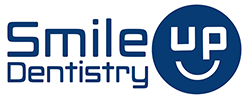Everything You Need to Know About Oral Appliance Therapy for Sleep Apnea
If you’re struggling with sleep apnea, you know how frustrating it can be to constantly wake up feeling tired and unfocused. One common treatment for sleep apnea is continuous positive airway pressure (CPAP) therapy, but it’s not always the best option for everyone. Luckily, there is an alternative – oral appliance therapy.
In this blog, we’ll cover everything you need to know about oral appliance therapy for sleep apnea, including what it is, how it works, and the pros and cons of this approach.
What is Oral Appliance Therapy?
Oral appliance therapy involves wearing a customized mouthguard-like device while you sleep. This device is designed to keep your airway open by repositioning your jaw and tongue. By doing so, it can decrease the frequency and severity of your sleep apnea symptoms.
How Does it Work?
The oral appliance is designed to hold your lower jaw slightly forward so that your tongue and soft tissues at the back of your throat don’t collapse and block your airway. This keeps the airway open and allows for easier breathing during sleep. The device is custom-made to fit your mouth and is adjusted by a dental professional to ensure maximum effectiveness.
Pros of Oral Appliance Therapy
One of the main advantages of oral appliance therapy is that it’s a non-invasive treatment for sleep apnea. Unlike CPAP therapy, there are no masks or tubes that need to be worn. The device is also small and easy to transport, making it a great option for those who frequently travel.
Another benefit of oral appliance therapy is that it’s often more comfortable than CPAP therapy. Many people find the mouthguard-like device to be less intrusive and easier to get used to.
Cons of Oral Appliance Therapy
While oral appliance therapy can be effective for many people, it’s not a one-size-fits-all solution. The device may not work for those with severe sleep apnea or those who have other medical conditions that affect their breathing.
It’s also important to note that oral appliance therapy can be expensive, and it may not be covered by insurance. Additionally, the device will need to be replaced every few years, which can add to the cost.
How to Find the Best Oral Appliance for Sleep Apnea
If you’re interested in trying oral appliance therapy for sleep apnea, it’s important to find a dental professional who specializes in this type of treatment. They will be able to evaluate your specific needs and recommend the best type of device for you.
When choosing an oral appliance, it’s also important to consider factors such as comfort, ease of use, and effectiveness. Your dental professional will be able to provide guidance and help you make an informed decision.
In conclusion, oral appliance therapy can be a great alternative to CPAP therapy for those struggling with sleep apnea. While it may not be the best option for everyone, it’s worth considering as a non-invasive and potentially more comfortable treatment option. If you’re interested in learning more, be sure to consult with a dental professional who specializes in oral appliance therapy for sleep apnea.
Dr. Sonya Reddy received her education at the prestigious NYU College Of Dentistry, where she also received special training in Cosmetic Dentistry. Dr. Reddy is a member of the American Cosmetic Dentists, the Academy of General Dentistry, the American Dental Association, and a SMART certified and accredited member of the International Academy of Oral Medicine & Toxicology.

